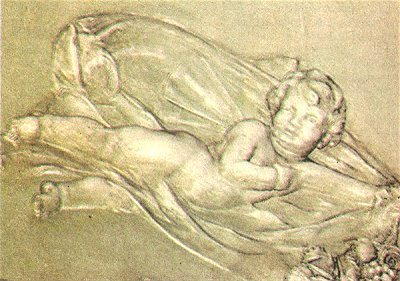Angels we have seen on high
Enter the Rubens Room at the Ringling Museum of Art. When John Ringling built the gallery to house his collection of Rubens' epic canvases "The Triumph of the Eucharist", he commissioned Sarasota craftsman Claude Baylor to copy the winged angels in the paintings, including the draped garlands held aloft by the angels. Baylor fashioned bas-reliefs in the cove ceiling. He placed the flying putti over each of the four paintings, as well as over each side of the gallery entryway. These happy bambini, in the painting and on the wall above them, invigorate the galleries with joy. Which makes them consummate models for Christmas. Herald-Tribune.
|
